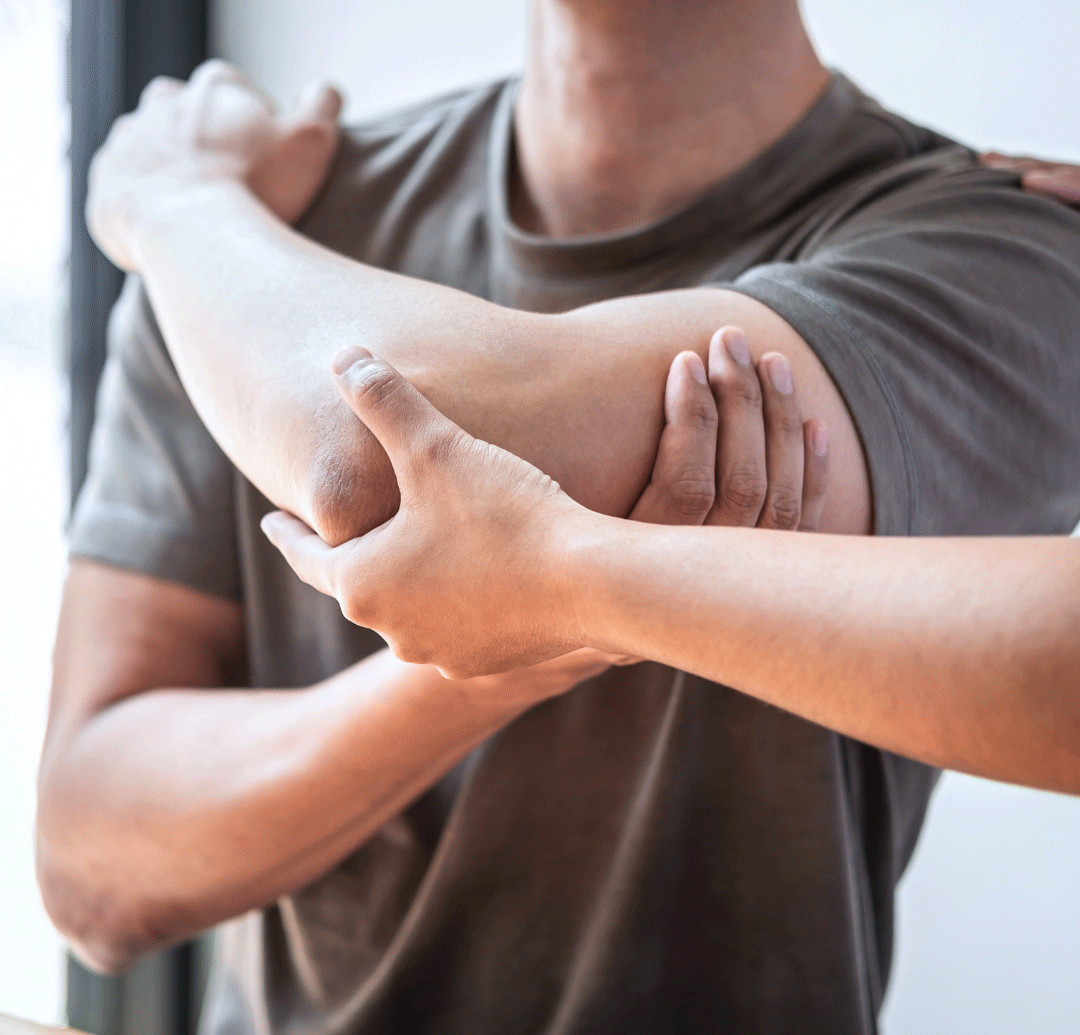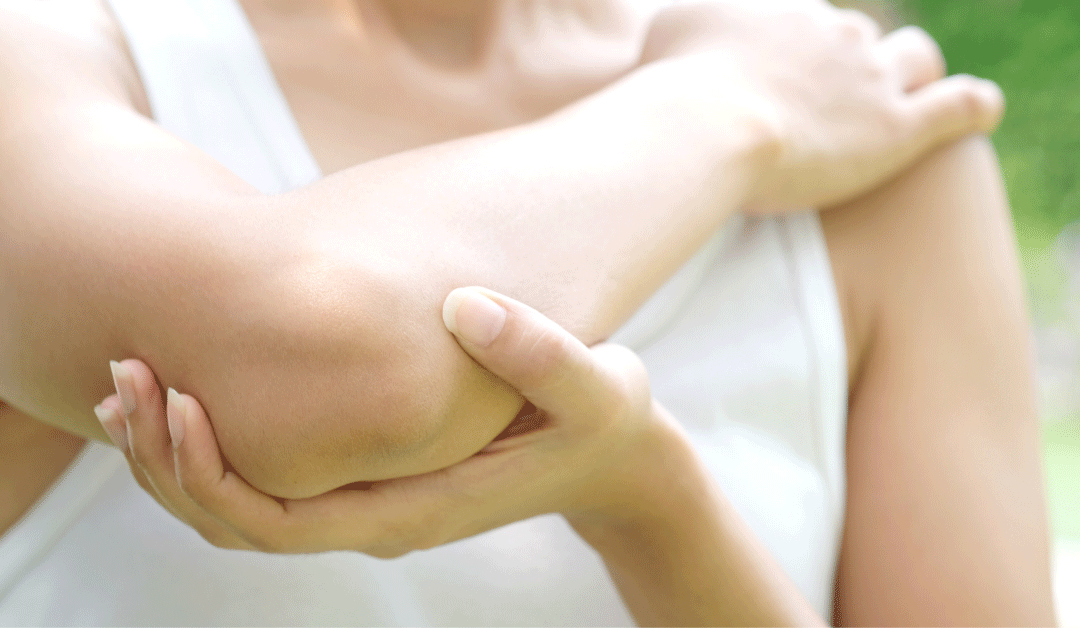Despite the names, tennis and golfer’s elbow isn’t just limited to people who play these sports. Repetitive tasks like gardening, shoveling, throwing a ball, and similar summer activities can all put you at a risk of these common summer strains.
What Is Tennis Elbow?

Tennis elbow, also known as lateral epicondylalgia, is a common overuse injury resulting from repetitive motion involving the tendons in your elbow. These tendons extend and stabilize the wrist as they anchor your muscles to your bones. When the attachment site weakens, you start to experience pain and tenderness while engaged in everyday activities involving gripping, grasping or lifting.
Tennis elbow usually develops gradually, starting off as mild discomfort and worsening as time passes. In most cases, there is no specific incident that can be linked to the start of the symptoms.
Many people suffering from tennis elbow experience recurring pain radiating from the elbow all the way down the forearm, with pain that increases when they attempt to extend or straighten the elbow.
Other common signs of tennis elbow include:
- Difficulty gripping or lifting objects
- Weak grip strength
- Sharp twinges when engaged in activities using the elbow
- Pain during and after activities involving the wrist
- Numbness or tingling in the fingers
- A dull ache when resting
What Is Golfer’s Elbow?

Golfer’s elbow is a completely different disorder than tennis elbow. Medial epicondylalgia, more commonly referred to as golfer’s elbow, is discomfort or irritation occurring on the inner side of the arm and elbow that is caused by activities that require repeated flexing or twisting of the wrist — for example, anything that requires you to bend your wrist downward or overuse your forearm muscles.
When you do activities that require repeated lifting, especially if your elbow is extended and your palm is facing down, this can also cause the condition.
Common signs you are suffering from golfer’s elbow include:
- Pain when making a fist or twisting the forearm.
- The affected area is tender to the touch or slightly swollen.
- Pain worsens when you attempt to flex your wrist.
- Pain when you pick up something with your palm down or squeeze a ball.
Tennis Elbow Vs. Golfer’s Elbow
Many people often confuse tennis elbow and golfer’s elbow and that’s because they do actually share quite a few characteristics including:
- Both are overuse injuries, caused by repetitive motions involving your arm and wrist.
- They both are characterized by damage to the tendons that attach your forearm muscles to the bone at your elbow.
- They both initially involve some inflammation of the tendons but can progress to disruption of the tendon collagen fibres.
- Both cause pain to the elbow region.
- You don’t need to participate in the sport for which they’re named to get these conditions.
- Both start gradually but can get worse over time.
- Treatment for both is similar, beginning with giving your elbow and wrist a rest to reduce the amount of strain.
Differences Between Golfers And Tennis Elbow
There are a few distinct characteristics of each condition that will help you tell them apart including:
- Inflammation Location: The difference between golfers and tennis elbow centres on the location of the tendons involved. A person suffering from tennis elbow will experience inflammation of the outside of the elbow and forearm areas, while a person suffering from golfer’s elbow will experience inflammation on the inner side of the arm and elbow.
- Tendon Affected: Tennis elbow affects the lateral (outside) epicondyle tendon. These are connected to the muscles that stretch your wrist backward and allow you to spread your fingers. Golfer’s elbow affects the medial (inside) epicondyle tendon. This is attached to the muscles you use to flex your wrist and contract your fingers, like when you grip something.
- Symptoms: The side effects of these conditions can be very similar, but they are on opposite sides of the elbow and arm. Tennis elbow presents with pain and tenderness experienced on the outside of your elbow, while golfer’s elbow can be felt on the inside of your elbow and down your arm. Golfer’s elbow can also cause numbness or tingling in your fingers.
How Are They Treated?
Determining the correct cause for your elbow pain is the best method for receiving proper treatment. That’s why it’s important to visit your physiotherapist who can assess your elbow and give you an accurate diagnosis.
Unfortunately, basic self-care at home will not resolve your tennis and golfer elbow pain permanently and if these conditions are not treated promptly, they can cause weakness in the hands or wrist as well as stiffness in the elbow.
An experienced physiotherapist can develop a personalised exercise program designed to strengthen the forearm, wrist and shoulder muscles. The therapist may use massage, ultrasound and other muscle-stimulation techniques to promote healing.

To make an appointment with an SPHC Physio book now or call us on 3869 1099.

